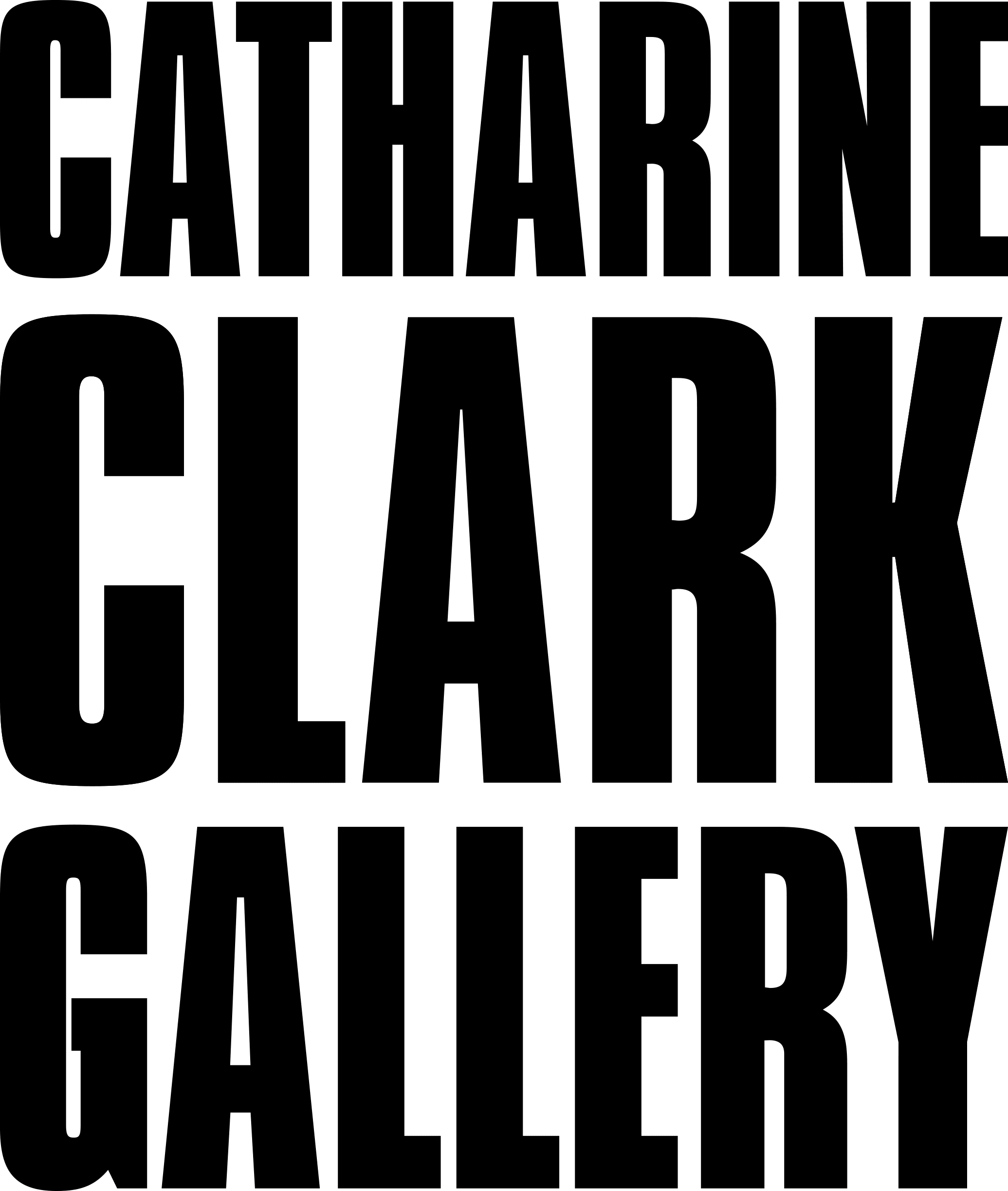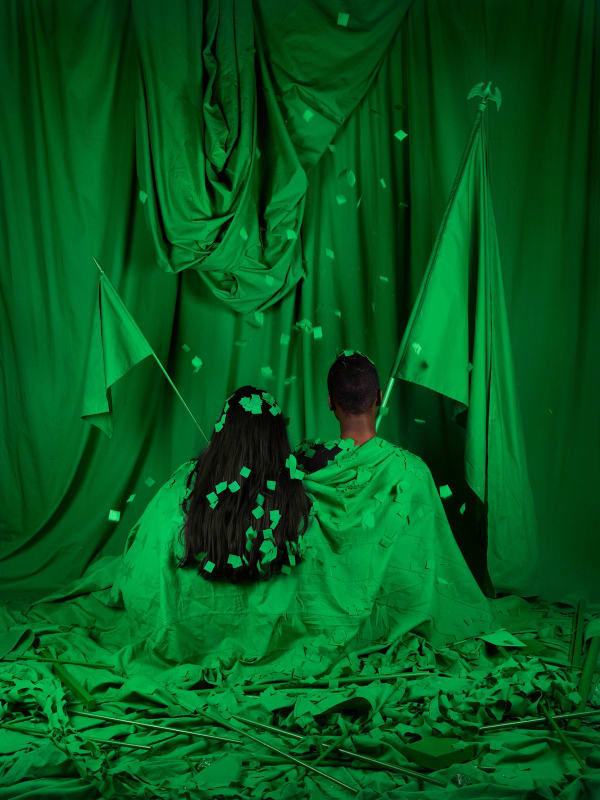Stephanie Syjuco teaches in the Art Practice department at the University of California, Berkeley. She often posts on Instagram about bringing students to visit campus archives, like the Bancroft Library or the Garron Reading Room in her home department, whose collection she has helped organize and catalogue. For some of her students, this is their first time in an archive, and Syjuco writes about what it feels like to share in their experience, looking closely at letters, snapshots, and the ephemera of past lives. In her own work, Syjuco reproduces archival materials in photographs, videos, and installations that capture the vividness – but also the grief – of these encounters, asking us to question whose stories have been lost and how we might find them.
Syjuco’s work can be seen at a number of venues this spring. Dodge+Burn, a survey of her work since 2004, is on view through May 4 at Catharine Clark Gallery in San Francisco, and After/Images opens June 1 at the Frye Art Museum in Seattle. Her work is also on view in two group shows: P L A C E: Reckonings by Asian American Artists at the Institute of Contemporary Art, San José (through August 11) and Nineteenth-Century Photography Now at the Getty Museum in Los Angeles (through July 7).

Dodge+Burn takes its name from the project that opens the exhibition, whose full title is Dodge/Burn (Visible Storage). “Dodge” and “burn” are techniques used when developing pictures in a darkroom. Maybe more to the point, they are also Photoshop tools, which Syjuco refers to throughout the installation, along with other digital-editing processes: chroma-key green, used in video post-production; cosmetic skin tone and color-calibration charts. Gray-and-white checkerboard, the transparent layer in Photoshop, relates to the patterns of 19th-century woven coverlets Syjuco bought on eBay. She is interested in how images can be manipulated to suit different historical and political narratives, and the installation assembles a chaotic and sometimes playful cast of objects: life-sized mannequins in antebellum dress, contemporary protest imagery, and laser cutouts of plant specimens, reading somewhere between a store display and a nightmare archive, a record of how whiteness and colonial ideology shape what we see.

In the classic 1962 John Ford Western, The Man Who Shot Liberty Valance, a reporter tells a character played by Jimmy Stewart: “This is the West, sir. When the legend becomes truth, print the legend.” It is hard to think of an artist who better illustrates the settler colonial myth than the American artist Frederic Remington (1861-1909). His bronze sculptures describe archetypal Western scenes – a cowboy breaking a horse, a horse and rider being surprised by an enemy – and convey taut masculinity and an easy narrative of “how the West was won.” In Set-Ups (on view at Catharine Clark Gallery), Syjuco photographs three of Remington’s works – Bronco Buster, The Outlaw, and The Rattlesnake – making pictures of the sculptures from multiple angles while they are positioned against black drapes. Two green-gloved hands reach into the frame: in one print they hold the Remington at its base, in others they position a color cast (used to calibrate tones) or measuring tape. The inclusion of these tools in the photographs suggests how national narratives are curated and conserved, but it also holds them up to our scrutiny, the Remington cowboy now framed by a gaze not unlike one that fixes the subjects of ethnographic photographs.
There is a tactile quality to a lot of the work in Dodge+Burn. Maybe this is in part because Syjuco trained as a sculptor, but it also allows her to call attention to how images are made, sometimes in literal ways. Manhandled is a series of close-up details of hands, borrowed from unnamed paintings, holding reins or brass fountain pens, or resting on an upper thigh, white male hands that remind the viewer who shaped settler colonial narratives of the West. But the idea that stories can be cast and recast is part of our contemporary political landscape, too. The still-life photographs of Chromakey Aftermath restage props and ephemera from demonstrations in the San Francisco Bay Area in 2016 – banners, posters, and barriers recreated in the same post-production green that appears throughout her work, uncanny blank objects onto which our politics can be projected.

Syjuco was born in Manilla, and much of her work incorporates the traces of the people and history of the Philippines (which was a territory of the United States from 1898 to 1946) in American archives. Both the Overlays and Pile-Ups series include materials Syjuco found in collections like the Smithsonian and the Missouri Historical Society, artifacts, plant samples, and ethnographic portraits rephotographed and combined into collages. Some of these show the hand of the artist reordering objects, as if the right arrangement could help us make sense of the stories they tell. While researching in Missouri, Syjuco collected photographs of a Filipino “village” constructed at the 1904 World’s Fair in St. Louis, where “natives” performed dances and rituals. In the video Block out the Sun, the hand of the artist appears again, methodically obscuring the faces of the subjects of these images, denying our continued gaze.
In the center of another room in the gallery sits a wooden rack holding about 20 small photographs. They are protected by plastic sleeves, as if they were drawn from an archive, and at first glance they read as if they’re from the 19th or maybe early 20th century. If you want to sift through or rearrange the images, a small sign reads PLEASE ASK FOR ASSISTANCE. The photographs become stranger the closer you look. Landscapes – lush even in black-and-white and sepia tones – are marked with streaks and blurs. Two spears seem to float on their own above a dirt path, a ghostly translucency lingers between trees. An open field is lined with smudges that look not unlike fresh graves. If these pictures had subjects, they have somehow vanished.
These are part of a project titled Blind Spot (Artifacts), made from original images held in collections around the country like the Smithsonian and the Library of Congress. Syjuco has used Photoshop to remove the human figures from the originals. She writes in her artist statement that these are “healed” ethnographic photographs, and “the digital glitches and pixelated ruptures break the lull of the gaze and ask the viewer to ‘search’ for what is not there.” In this series, Syjuco does in a single gesture what many historians – or essayists, or anyone working in archives – wish they could do: she tells stories about presence and absence and invites us to look closely, to look again.

Syjuco has just published her first monograph with Radius Books. The Unruly Archive resembles a storage file, its cover a facsimile of the cardboard boxes found in almost any library. Each section is marked by hand-labeled folders, like “Visual research misc.,” and devoted to a single artwork. In Figure/Ground the reader encounters archival materials but also the effects of their preservation, photographs of piled images and ripped folders that register the conditions of the reading rooms where they were made, light reflected on tape and plastic sleeves creating new obscurities and distortions. In her introduction, Syjuco writes that the book “simulates what it is like to piece together a vision of an entire country and people – the Philippines, Filipinos, and by extension Filipinx Americans – through the lens of the American colonial archive.” The objects that circulate in her work are reproduced or borrowed or sometimes even “stolen” (as Syjuco calls it, a word that suggests she used them without permission but also recalls how many museums of have built their collections) from the Missouri Historical Society, the St. Louis Public Library, the Mercantile Library, the St. Louis Science Center, and the National Museums of American History, Natural History, and Asian Art, among others. This terminology can have a funny redoubling effect. A few years ago the Smithsonian acquired one of the Pile-Ups, which Syjuco made with materials from its collections. The introduction to The Unruly Archive is titled after its catalogue entry: [Object number 2022.24.1]. Another way of finding yourself in the archive.
Read more at: https://photographmag.com/feature/stephanie-syjuco-upending-the-archive/



